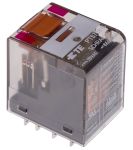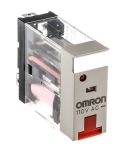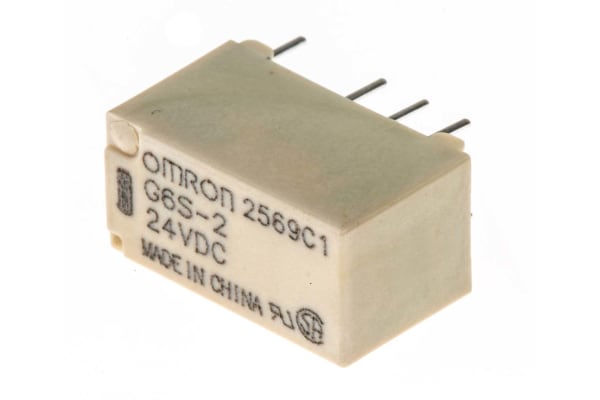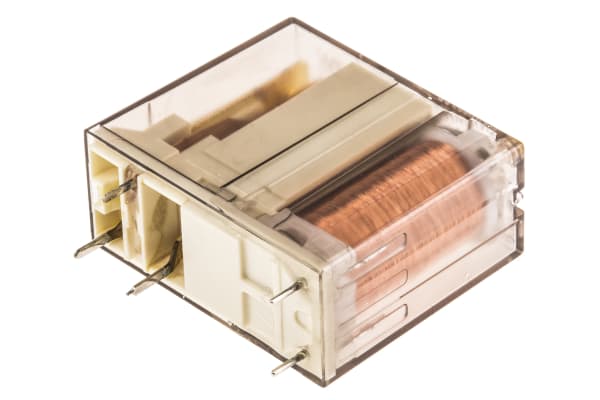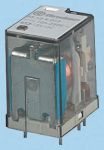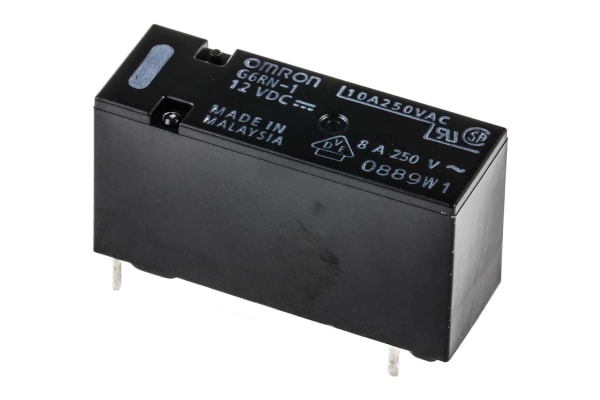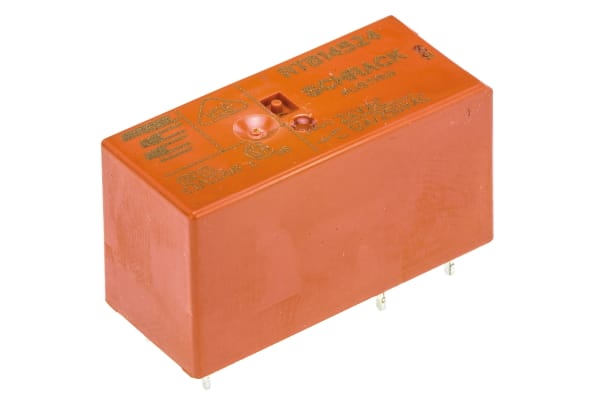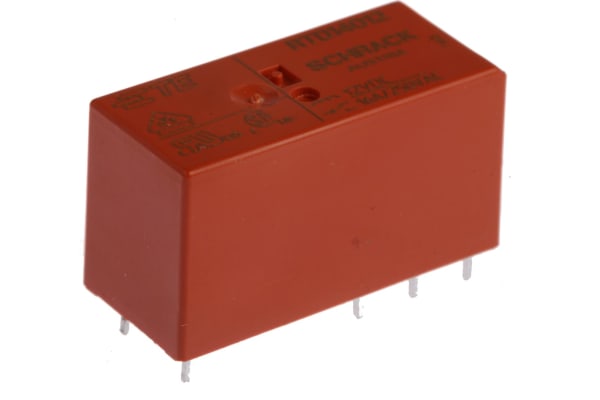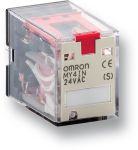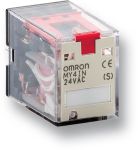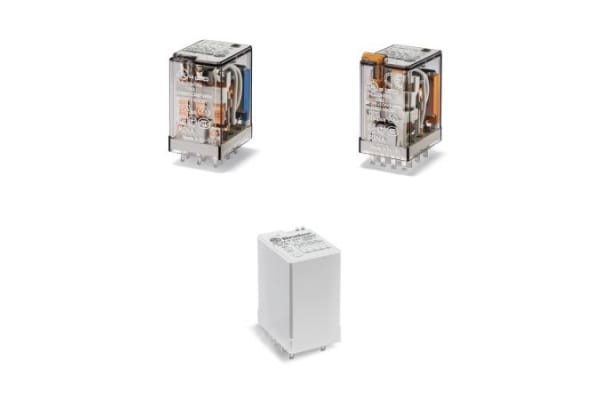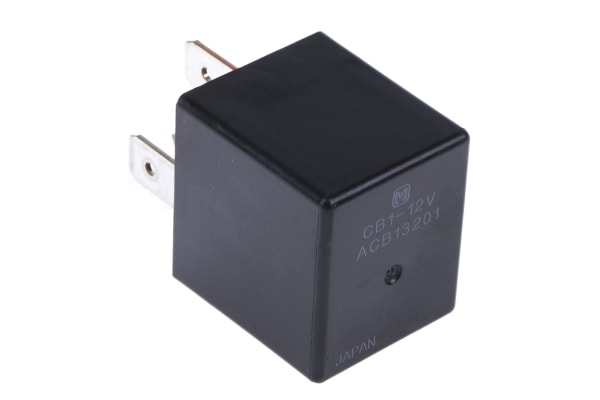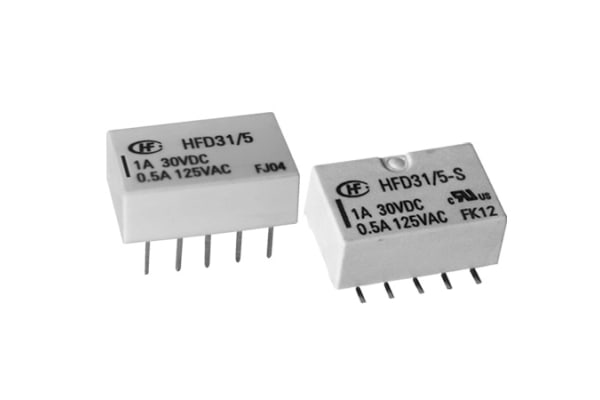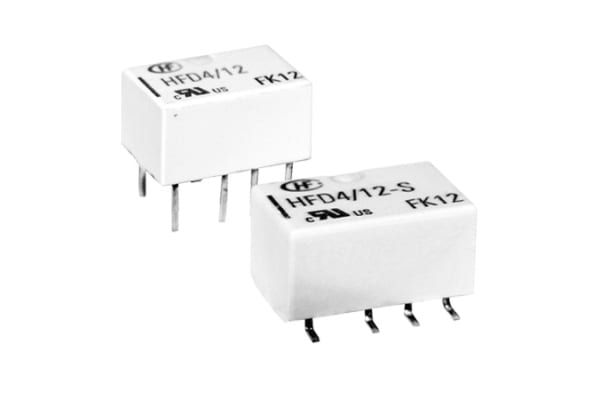Non-Latching Relays
Relays are electrical switches that are operated by electrical impulses with the primary function to open and close a circuit, they can also be referred to as industrial switches. There are 2 main types available, latching and non–latching relays.How do non-latching relays work?Non-latching relays are in a normally closed (NC) position and will stay in this state without power. When power passes through the circuit, the relay switched to a normally open (NO) position by using an internal coil to generate a magnetic force, holding this NO position. Once the current is turned off, it returns to the NC position. This makes non-latching relays well suited to push-button applications like keyboards and micro-controller input buttons.What are non-latching relays used for?Non-latching relays are highly durable and versatile components, making their performance long lasting and suitable for use in a wide range of applications, such as:Automotive enginesHousehold appliancesIndustrial machineryMedical equipmentTelecommunications equipmentWhat is the difference between latching and non-latching relays?Both types of relays in similar in design and function, however, a significant difference between them is that a latching relay will remain in the last position it when it was last powered, whereas a non-latching goes back to its normal position. This makes each more type of relay suitable for different applications. Considerations when selecting a relayWhen choosing a relay, it is important to consider a number of specifications to ensure it is fit for purpose, some factors include:Coil voltage – the required voltage to actuate the switching mechanism. If a voltage is too high this could damage the components, if it is too low then it will not actuate. Contact configuration – This is the state the contacts are in without power. For example SPST, single pole single throw.Contact material – the relay contacts are available in many materials that have certain properties. Common materials are gold, silver, tin oxide and nickel Coil power – the amount of power (watts) the coil operates at. This must match the power in the circuit for correct function. Coil resistance – the amount of resistance (ohms) in the circuit that the coil creates.
-
TE Connectivity, 115V ac Coil Non-Latching Relay 4PDT, 6A Switching Current PCB Mount, 4 Pole, PT570615 9-1419111-0
IDR162,055.05 -
Omron, 110V ac Coil Non-Latching Relay SPDT, 10A Switching Current PCB Mount Single Pole, G2R-1-SNI 110AC(S)
IDR226,247.73 -
Omron, 24V dc Coil Non-Latching Relay DPDT, 2A Switching Current PCB Mount, 2 Pole, G6S-2 24DC
IDR64,926.91 -
Finder, 24V ac Coil Non-Latching Relay 3PDT, 10A Switching Current Plug In, 3 Pole, 55.33.8.024.0010
IDR177,264.10 -
TE Connectivity, 24V dc Coil Non-Latching Relay DPDT, 3A Switching Current PCB Mount, 2 Pole, V23105A5305A201
IDR71,220.31 -
TE Connectivity, 24V dc Coil Non-Latching Relay DPDT, 3A Switching Current PCB Mount, 2 Pole, V23105A5405A201
IDR79,506.62 -
TE Connectivity, 12V dc Coil Non-Latching Relay SPDT, 12A Switching Current PCB Mount Single Pole, RP412012
IDR153,768.74 -
Finder, 24V dc Coil Non-Latching Relay 4PDT, 12A Switching Current PCB Mount, 4 Pole, 56.44.9.024.0000
IDR309,530.39 -
Finder, 24V ac Coil Non-Latching Relay DPDT, 10A Switching Current PCB Mount, 2 Pole, 55.12.8.024.0000
IDR174,012.51 -
Finder, 24V ac Coil Non-Latching Relay 4PDT, 7A Switching Current PCB Mount, 4 Pole, 55.14.8.024.0000
IDR185,655.30 -
Omron, 24V dc Coil Non-Latching Relay SPDT, 8A Switching Current PCB Mount Single Pole, G6RN-1 24DC
IDR76,359.92 -
Omron, 12V dc Coil Non-Latching Relay SPDT, 8A Switching Current PCB Mount Single Pole, G6RN-1 12DC
IDR57,689.50 -
Omron, 24V dc Coil Non-Latching Relay DPDT, 5A Switching Current PCB Mount, 2 Pole, G6B-2114P-US DC24
IDR109,714.94 -
TE Connectivity, 230V ac Coil Non-Latching Relay SPDT, 12A Switching Current PCB Mount Single Pole, RTB14730
IDR113,490.98 -
TE Connectivity, 24V ac Coil Non-Latching Relay SPDT, 12A Switching Current PCB Mount Single Pole, RTB14524
IDR65,241.58 -
TE Connectivity, 12V dc Coil Non-Latching Relay SPDT, 16A Switching Current PCB Mount Single Pole, RTD14012
IDR50,661.87 -
TE Connectivity, 24V dc Coil Non-Latching Relay SPDT, 12A Switching Current PCB Mount Single Pole, RTB14024
IDR62,514.44 -
Fujitsu, 5V dc Coil Non-Latching Relay DPDT, 1A Switching Current PCB Mount, 2 Pole, RY-5W-K
IDR40,382.65 -
Omron, 220/240V ac Coil Non-Latching Relay 4PDT, 3A Switching Current Plug In, 4 Pole, MY4-GS 220/240VAC
IDR114,644.77 -
Omron, 220/240V ac Coil Non-Latching Relay DPDT, 5A Switching Current Plug In, 2 Pole, MY2N-GS 220/240VAC
IDR162,789.28 -
Finder, 24V dc Coil Non-Latching Relay 4PDT, 7A Switching Current PCB Mount, 4 Pole, 55.34.9.024.0090
IDR210,828.90 -
Panasonic, 12V dc Coil Automotive Relay SPDT, 40A Switching Current Plug In Single Pole, CB112
IDR142,545.51 -
Hongfa Europe GMBH, 5V dc Coil Non-Latching Relay DPDT, 2A Switching Current Surface Mount, 2 Pole, HFD31/5-S
IDR198,346.99Pack (1 Pack of 5) -
Hongfa Europe GMBH, 5V dc Coil Non-Latching Relay DPDT, 2A Switching Current PCB Mount, 2 Pole, HFD4/005
IDR94,610.78Pack (1 Pack of 2)



